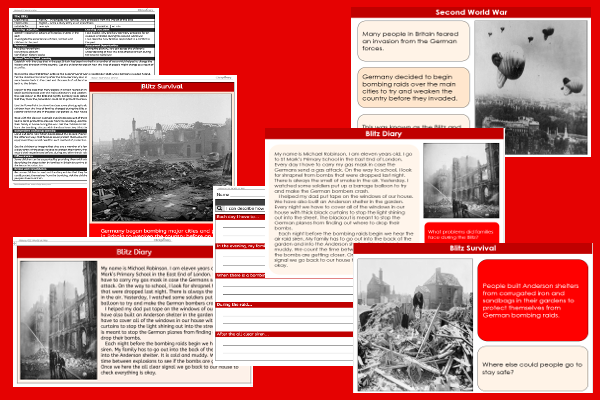Lesson Two – The Blitz

This history teaching pack for Key Stage Two gets the children to investigate and explain some of the different ways that families were supported and protected from the impact of the Blitz on Britain during the Second World War.
The class can model how to record a diary entry to suggest how a family worked to protect themselves from the effects of the bombing raids during the Blitz.
Download this teaching pack including a lesson plan, classroom activities and an interactive presentation to investigate and explain some of the different ways that families were supported and protected from the impact of the Blitz on Britain during the Second World War
Activities in this teaching pack include display posters to describe the effects of the Blitz on life in Britain during the Second World War, a shared reading text to explain how families survived the Blitz by using different forms of protection and a template to write a diary entry to record different ways that families protected themselves during the Blitz.
The interactive presentation can be used to explore how families were protected from the impact of the Blitz on Britain during the Second World War.
This lesson is part of a history scheme of work to get the children to investigate and record the impact of the Second World War on Britain and how the conflict changed family life at this time in world history. There are teaching activities for shared learning, differentiated worksheets to support independent learning and interactive presentations to introduce concepts and key skills.
-

Theme Park Visit
Practise identifying and calculating the timing and duration of rides and events when visiting a theme park on a special family trip
-

Family Holiday Trips
Identify and record how to compose and publish recounts using adverbials of time and place to describe family holidays to different places in the world
-

Money Multiplication
Explain and model how to use standard written calculation methods to multiply money amounts in pounds and pence when solving number problems
-

Sport Teams
Explain and model how to use brackets and dashes to add extra information to sentences describing how to play sports and games as part of a team
